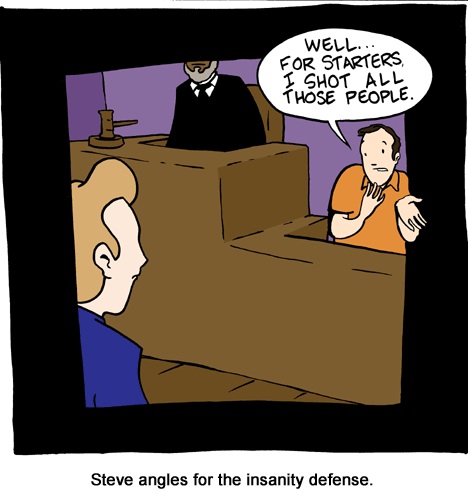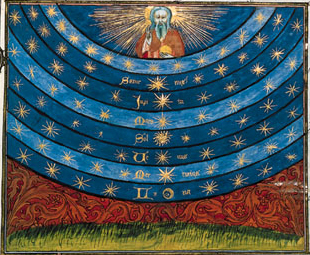This is the second of what I intend to be four reviews of The Hollow Crown, the new BBC video adaptations of Shakespeare’s history plays, currently being broadcast on PBS and available for streaming on their website. They are also available on DVD, which is how I’m viewing the series. The series comprises Richard II; Henry IV, Part 1; Henry IV, Part 2; and Henry V. A complete plot summary might be cumbersome, but if you want to follow along with song parodies, they were set to the tunes of “Single Ladies,” “Tik Tok,” “Blurred Lines,” and “One More Night.”. Last week, I reviewed Richard II. This review will focus on Henry IV, Part 1.
Let me start by saying that it was really well done and I enjoyed it a great deal. There were a few elements about the adaptation that I didn’t like, and I will explain below what they were and why they are important to me. But overall, I give the production a big thumbs up, and recommend it highly.
The opening sequence lets us know that this is going to be a very different play from Richard II. While that play consisted largely of scenes set among nobility in the sterile court, this play opens with the streets bustling with the common people in all of their grimy splendor. Filthy peasants chop up dead animals for commerce and consumption beneath a window where a woman shakes dirt out of a rug. A dog licks at a dead pig, as merchants and consumers crowd into the marketplace, warmly greeting each other to exchange merchandise and soot. A clean dapper figure, Tom Hiddleston, giddily walks among them. It makes sense that he’s playing Hal, as I know he’ll be playing Henry V in the last play. But then he wanders into a tavern and wakes up a man who obviously must be Falstaff, and it turns out to be Simon Russell Beale. Oh yeah.
The first two scenes are intertwined, which I thought worked well in introducing the characters. This is something easier to do crisply on the screen than it is on stage, and I think it was done well. I also really liked the way the battle scenes were handled. The tavern scenes were well acted, but I think the production missed the disorderly energetic feeling of a tavern atmosphere. The patrons mostly seemed to stand around watching the principles perform, which was a little too tidy for my tastes.
In addition to Hiddleston and Beale, I thought the cast was very good, and enjoyed a number of outstanding performances in small roles. I thought that David Hayman (Worcester) and Michelle Dockery (Kate) were particularly worth mentioning. I also have to put Jeremy Irons (King Henry IV) in this category. I loved the scenes he was in, but the title role is a small part in this play, and I look forward to seeing more of him in the next one. I can’t wait for the final scene between Irons and Hiddleston. I just know that’s going to be amazing. To hold you over, there’s a scene in this play where Hal imitates his father, and I just wanted to give a shout out of appreciation for Tom Hiddleston’s impression of Jeremy Irons.
The Percy family all had the same accent, and this may mean something to an English audience that I’m missing, though I think I can take an educated guess. I think they were doing what the English call a “Northern” accent, which would make sense for Northumberland. And a little research shows that Joe Armstrong (Hotspur) is the real-life son of Alun Armstrong (Northumberland), who grew up in County Durham, which actually borders Northumberland. So it would appear that someone went to a lot of effort to make this piece of it authentic, and I can appreciate that.
One thing I didn’t like was the use of voice-over for two of the soliloquies in the play. Both Hal and Falstaff have speeches that are here presented in voice-over as they make their way through crowds. Voice-over was a technique that Olivier used in his 1948 movie of Hamlet. Olivier was shot in close up, though, making facial expressions to show that he was thinking the words we were hearing. It does seem a bit silly, but I understand what he was going for. In trying to adapt the play from one medium to another, he wanted to use the lexicography of the new medium, and that included the ability to hear the character’s thoughts without him having to speak them. It was a necessary experiment, but I don’t think it worked. There’s an intimacy when an actor speaks directly to the audience, as the air escapes his lungs and his emotions radiate from his eyes, that has a potency to make a connection. Shakespeare understood this potency and used it often. That connection can actually transfer to a screen production, but in my opinion, it doesn’t survive the additional layer of distancing that voice-over brings.
That’s why it didn’t work for Olivier, but I think it’s even worse here. At least Olivier attempted to be present for the soliloquies; you could see he was actually thinking the speech we were hearing. In these scenes, Hal and Falstaff are just going about their business. There’s no sense that the actor even knows where in the speech we are. And it’s true that we often have thoughts running through our minds as we proceed through our day, but that lessens the importance of the speech. What’s more, in the screen lexicography of our day, the voice-over does not necessarily signify a character’s inner thoughts. Quite often, a voice-over indicates the character’s voice from the future narrating past events. That is entirely the wrong choice here.
The “I know you all” speech sets up Hal’s character arc. The later King Henry V will be one of the greatest heroes for Shakespeare’s England, and Shakespeare wants to be very clear in establishing that the young prince’s history of debauchery was a calculated plan from the very beginning. Thus, we need to hear him give this speech at this very moment, after he has agreed to participate in the shenanigans but before he actually does it, so that he can establish that he knows what he’s doing. If it’s a disembodied voice from the future, then it sounds like rationalizing after the fact, an impression Shakespeare was trying very hard not to give. And even if we do accept the voice as Hal’s thoughts, they are presented in such a way as to minimize their importance, rather than being one of the defining moments of his character. The payoff doesn’t come for another two plays, so it’s important to really emphasize it now.
Less damaging is Falstaff’s “honor” speech done as a voice-over, but this speech really needs an actor. We forgive Falstaff his trespasses because he’s so charming and describes his philosophy with a twinkle in his eye. No twinkle, no empathy, and the “honor” speech diminishes Falstaff’s character. The payoff for this speech comes only a short time later on the battlefield when Falstaff discovers the body of Sir Walter Blunt and says “There’s honor for you.” But without the speech, there is no shared reference with the audience, and the line is thrown away.
And while I’m railing about details, where was the Douglas? I understand cuts have to be made, but this is a really fun character that also happens to add a lot to plot and character development for the play as a whole. You can live without the Douglas, I suppose, instead of adding to the sense of menace that the rebels present. And you can live without the Douglas, I suppose, instead of creating a brilliant stage moment when the unlikely opponent Falstaff has to face off against him. And you can live without the Douglas, I suppose, when Hal has the opportunity to display mercy by letting him go at the end. But what happens when you lose the Douglas in the scene where Hal comes to his father’s defense in battle? This is a kid who everyone thinks is a degenerate hooligan, and then he risks his own life to save his father’s, even when his father’s death would win him the crown. This is a pretty important moment for understanding Hal, wouldn’t you say?
So yes, I did have some quibbles with some of the individual choices, but as I said, I did enjoy the production overall, and it’s my pleasure to recommend it to you. I’m also looking forward to the next play with great anticipation. I’ll let you know when I’ve seen it.
You can watch the entire video for free on the PBS website.


